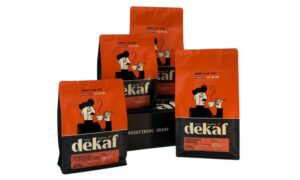Selling online today isn’t limited to your home country anymore. With global e-commerce booming, Shopify has made it almost effortless to open your store to international customers. You can launch a store today and start shipping to buyers halfway across the world tomorrow.
But — and it’s a pretty big but — going global is way more than just turning on international shipping and hoping for the best. Shopify does give you some handy tools like currency conversion and basic translations, but that’s only the surface-level stuff.
The real challenge starts when you realize every country wants a slightly different version of your product data. Different languages, different pricing, different compliance rules — and suddenly, your simple store turns into a tangled mess of spreadsheets and copy-paste nightmares.
That’s where PIM, or Product Information Management, comes into play. Think of it as your product data’s command center — the place where every description, price, translation, and regulation-friendly detail lives. Instead of scrambling to fix product pages every time you expand into a new country, PIM keeps everything organized and ready to roll — no matter where your next customer is shopping from.
The Real Struggles of Going Global on Shopify
I’ve seen this play out with so many brands — they start selling internationally, all excited about tapping into new markets, and within weeks their product data turns into a complete disaster. And I get it — global e-commerce is booming, with cross-border sales expected to hit $7.9 trillion by 2030. Everyone wants a piece of that pie.
But once you actually start selling across borders, reality hits hard. Here’s what you’re really up against when you take your Shopify store global:
- Inconsistent Product Data Everywhere
What’s the official product name? Is it the same in your EU store and your US store? Are the materials listed correctly? Are your product descriptions optimized for customers in Germany and Australia? Without a system in place, you end up with slightly (or wildly) different product info in every market — and that’s a trust killer for customers.
- Translation Chaos (aka Spreadsheet Hell)
I can’t even count how many brands still manage translations in random spreadsheets, then copy-paste into Shopify (or worse, rely entirely on auto-translate apps). That might fly when you’re adding two languages, but once you’re selling in 5, 10, or 15 countries? Things get messy fast. Missing translations, wrong product attributes, and SEO-unfriendly gibberish end up plastered all over your storefronts.
- Compliance Landmines in Every Country
Every market has its own rules about what product info needs to be shown — and missing even a tiny detail can get you into legal trouble. In the EU, for example, product labels need to follow strict sustainability regulations. Selling cosmetics? You’ve got to disclose ingredients in line with Cosmetic Regulation (EC) No 1223/2009. Food products? Say hello to allergen labeling rules. In the US, it’s a whole different playbook — and that’s before you even think about markets like Canada, Japan, or Australia.
- Pricing Headaches Across Regions
Global pricing is way more than just converting USD to euros. You’ve got different VAT rates, local taxes, shipping costs, and market expectations to consider. What feels like a premium price in the US might be a bargain in the UK — or vice versa. And if you don’t have a central way to manage regional pricing, you’ll spend more time updating price lists than actually selling.
- Units of Measurement: The Sneaky Problem
It sounds small, but it’s a real pain — US shoppers expect inches and pounds, while European customers need centimeters and kilograms. Apparel sizes, nutritional info, even the way you describe product weight — all of it needs to match local expectations. Get it wrong, and you risk returns, unhappy customers, or worse, customers bouncing before they buy.
- The Manual Update Nightmare
Now imagine trying to keep all of that accurate — for every product in every country — manually. One new product launch can mean updating dozens of listings across languages, stores, marketplaces, and platforms. And every time you expand into a new country, the workload grows exponentially. It’s a never-ending game of catch-up — and it burns through time, money, and sanity.
What’s PIM — and Why Does It Matter for Shopify Merchants?
Let’s break this down. If you haven’t heard of PIM before, it stands for Product Information Management. Fancy name, but the idea is simple: it’s software that keeps all your product data in one organized place.
That means everything — product names, descriptions, specs, images, translations, prices, compliance info — all stored and managed from a single hub. No more digging through random spreadsheets or fixing the same mistake in five different places.
Now, here’s where this really matters if you’re selling on Shopify.
Shopify runs your storefront — the website, the checkout, the payments. But PIM runs your product data — the actual content that fills your store, from product titles to pricing in different currencies to descriptions in different languages.
Think of it like this:
- Shopify is the stage where your products show up for customers.
- PIM is the script that tells every product what to say, how much it costs, and which details to show — in every language, for every market you sell to.
If you’re planning to take your Shopify store global, you’ll need a script that speaks every language and plays by every local rule — and that’s exactly what PIM helps you do.
How PIM Actually Makes Global Selling Easier
- a) Translations Made Simple
With a PIM, you keep all your product info — descriptions, specs, names — in your main language. Then, you add translations for every country right there in the same place.
Need to update a product name? Change it once, and the PIM automatically updates the name in every language and every store.
On top of that, you can keep your SEO keywords organized for each market, so your products show up when local customers search — no more late-night copy-pasting into Google Translate.
- b) Pricing That Works for Each Country
Selling in Europe? Asia? North America? No problem — you can set different prices for each region, all from inside the PIM.
It also tracks currency conversions, tax differences, and market-specific costs — and can even sync directly with Shopify Markets. That way, your pricing stays accurate without you constantly updating everything manually.
- c) Sizing, Ingredients, and Other Local Details
Here’s a small thing that turns into a big problem: sizing and measurements. US customers expect inches and pounds; European shoppers need centimeters and kilograms.
Some countries also require ingredient lists, allergy warnings, or sustainability labels — and those rules change from place to place.
A PIM lets you store all these local product details in one spot and sends the right info to the right country. So your US store gets inches, your EU store gets centimeters — and nobody’s confused.
- d) Following Local Laws Without the Stress
Every country has its own rules about product labeling — from safety symbols to eco-certifications to legal disclaimers.
A solid PIM helps you stay ahead of this by offering templates for each market’s requirements. You fill out the product data once, and the PIM makes sure the right legal info shows up in the right place for each region — without you needing to double-check every single listing.
Faster Product Launches — Everywhere
Let’s talk speed — because in e-commerce, speed can make or break a global launch. If you’re still manually updating product data for every new market (especially if you’re bouncing between spreadsheets, Google Docs, and Shopify’s backend), you’re wasting serious time — and risking serious errors.
Here’s a reality check: according to a 2024 report from eMarketer, brands that expand internationally without centralized product data management spend up to 45% longer preparing product listings for new markets compared to brands using a PIM. When you multiply that by dozens (or even hundreds) of products, the time loss is massive.
With a PIM, you build your product listing once — complete with descriptions, images, translations, prices, and compliance info — and then send it everywhere at once. That means to all your Shopify stores, but also to marketplaces like Amazon and eBay, and even to social platforms if you’re using shoppable posts.
Instead of spending weeks prepping for a new country launch, you could be ready in a few days. And when your product data is already localized, translated, priced correctly, and legally compliant for each region? That launch timeline shrinks even further.
This is exactly the kind of efficiency that tools like Toriut bring to the table. With Toriut’s PIM capabilities, you’re not just keeping product data organized — you’re actively speeding up how fast you can break into new markets, all while keeping your product info clean and compliant across every region you sell to.
Wrapping It Up
Here’s the thing — selling globally on Shopify isn’t just a marketing challenge; it’s a product data challenge at its core. If your product information isn’t accurate, complete, translated, localized, and legally up to par, you’re setting yourself up for slow launches, frustrated customers, and in some cases, regulatory fines that can really hurt your bottom line.
A PIM solution like Toriut doesn’t just make product data management easier — it helps you grow faster, avoid expensive mistakes, and scale across borders with confidence.
So if you’re serious about taking your Shopify store global, don’t wait until product data chaos catches up with you. Get your PIM in place before your first international launch, and you’ll thank yourself later.



































